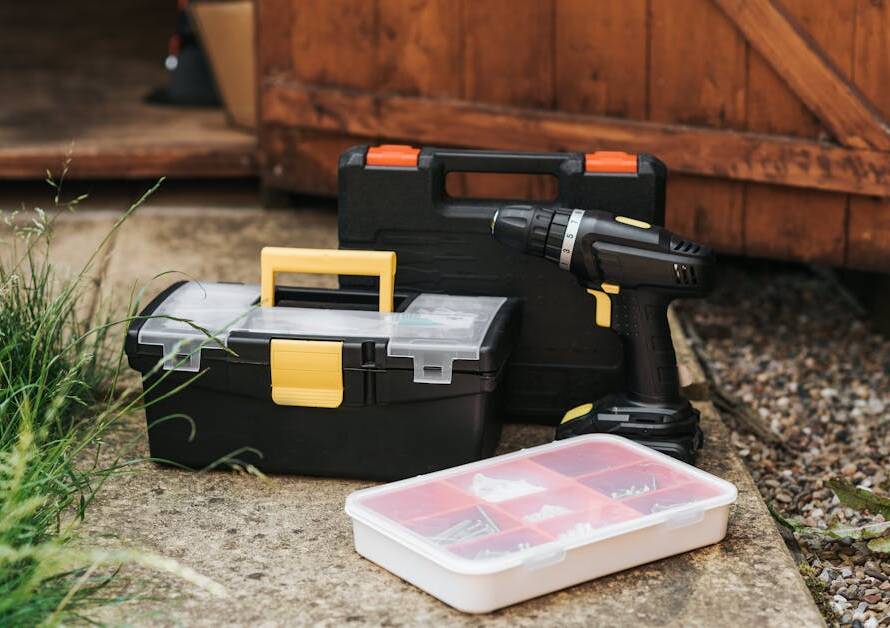Did you know that the average life expectancy of a sump pump is only approximately 7–10 years, and nearly 60% of U.S. homes located in a flood zone will experience basement flooding damage at least once? With seasonal rains, melting snow, and fluctuating groundwater levels, sump pump installation in Coeur d’Alene is a necessity to avoid expensive water damage beneath your home. A sump pump that is not working properly can lead to flooding, as well as mildew, structural framing damage, and repairs that can be expensive and severe.
Many homeowners are not aware that their sump pump is working inadequately until it is too late. The only way to avoid a disaster caused by this act, which is hitting snooze, is by recognizing the early warning signs of a failing unit and replacing the unit before your home is flooded.
In this article, we will highlight the 7 main signs you need a new sump pump and share some professional recommendations for how you can install one well, so you can catch the problem before it occurs and proactively keep your basement dry all year round.
What To Look For If Your Sump Pump Is Not Working?
Your sump pump is your first line of defense against basement flooding. If you observe early signs such as strange noises, rust, or excessive cycling of your sump pump, take note.
Sign 1: Strange noises
A properly working sump pump either makes a low humming sound or a quiet mechanical sound. If your sump pump is making unwanted sounds like grinding, rattling, or gurgling, your bearings may be worn out, an impeller may be damaged, or the motor is failing by using all of its mechanical components at one time.
The noises listed here usually compound on top of each other as time goes by, and repairs may not be able to fix the issue or may require an expensive replacement instead.
Sign 2: Running all the time
If your sump pump is running 24/7 with a very minor water level, there is something going wrong with the float switch, wiring, or the motor, where its mechanical components are working together internally and failing at once. Running continuously not only wastes power but also contributes to wear and tear and significantly shortens the useful life of the pump.
Sign 3: Lack of use
Ironically, pumps that sit idle for extended periods are just as likely to fail as overworked pumps. If you attempt to test your sump pump and it does not activate, it may have become seized from rust, debris buildup, or mechanical failure. In places like Coeur d’Alene, which experiences seasonal flooding, it is best to test it to be sure it will activate when needed.
Sign 4: Rusting or corrosion
Water, particularly with high mineral content or debris, can cause corrosion of the metal parts in the sump pump. Not only can you see rusting on the pump housing, but it can also be visible on the switch or discharge pipe, which can lead to leaks and eventually mechanical failure.
Sign 5: Excessive electrical issues
If your sump pump continually trips the breaker, fails to restart after a power outage, and does not have a battery backup, it poses a risk during storms. Reliable sump pumps should include systems to ensure continuous operation through emergencies.
Sign 6: Mold or musty odors
A sump pump that is functioning properly will quickly remove standing water, drying the area and not allowing moisture to linger. If you see evidence of dampness, mold, or a musty smell that persists, it could indicate your pump does not move enough water or your sump pump isn’t cycling properly.
Sign 7: Over 10 years old
Even if your sump pump appears to be functioning, it is recommended to replace it at 10 years of age. Older pumps are more likely to fail in extreme conditions, and newer pumps are typically more energy-efficient and reliable.
How to Install a Sump Pump Correctly
For some homeowners, replacing a sump pump can be a relatively simple do-it-yourself project. But installing a pump system comes with risks, and because of that, it is safe to have it installed by a sump pump installation company in Coeur d’Alene. Here is the step-by-step method used in the installation process:
Step 1: Safety precautions
Shut off electricity to the sump pump area, and wear waterproof gloves and protective equipment. If you are replacing a failed pump after flooding, make sure the area does not contain electrical hazards.
Step 2: Remove the old pump
After disconnecting power, removing the discharge pipe, and taking the old pump out of the sump pit, inspect the sump pit to ensure the installation site is clear of debris or excess sediment and that the integrity of the existing structure is intact and will not interfere with the new pump.
Step 3: Clean the sump pit
Sanitize the pit and verify that it is deep and wide enough for the sump pump discharge. Check for blockages and determine if any parts of the discharge pipe need replacing.
Step 4: Set the new pump
Review the set fall for the new sump pump to ensure that it is level and the float switch moves freely without obstruction before connecting the discharge pipe.
Step 5: Connect the discharge pipe
Attach and seal the discharge pipe to the pump outlet using either plumber’s tape for threaded pipe fittings or blue PVC cement for PVC fittings.
Step 6: Test the pump
Plug in your pump and pour some water into your sump pit to see if the float switch kicks on and if the pump successfully discharges the water. Adjust if needed.
Step 7: Install a backup system
If you want to be extra cautious, install a battery backup system so that your pump is still operational when the power goes out. This is typically more important in places like Coeur d’Alene, which is prone to seasonal storm activity.
Common Mistakes When Replacing Sump Pumps
- Using the wrong size pump – If your pump is too small, it won’t keep up with excessive flooding. However, if the pump is too big, it may cycle too fast, leading to premature failure.
- Float switch placement – Poor placement of the float switch can cause it not to turn on or turn on too frequently.
- Check valve – Not installing the check valve allows water to re-enter the pit after pumping.
- Not performing regular maintenance – All pumps, even brand-new pumps, need to be checked and tested quarterly.
Conclusion: Call Professionals To Get Your Sump Pump Installed Properly
You’re already at risk of property damage by not regularly maintaining and testing your sump pump, and at serious risk of water damage to your property, especially during severe weather events.
Proper installation of a sump pump, either DIY or by professionals, can maximize its functionality when you need it the most. In Coeur d’Alene, homeowners should view their sump pump as a necessary purchase, rather than an optional, one-time service.
Brothers Restoration is a leading property restoration company in Coeur d’Alene, assisting both residents and business owners with property recovery and protection solutions. We specialize in damage caused by water, fire, mold, and storms.
We also provide sump pump installation and maintenance services to be proactive and flood-ready year-round. With our certified team of professionals, we utilize modern equipment combined with fast and reliable service to maintain or restore your property.
Whenever you need emergency or preventative property repair, Brothers Restoration is ready to help 24 hours a day, 7 days a week. Call or contact us today to get started with a



